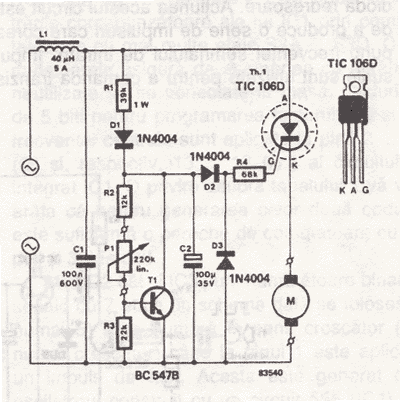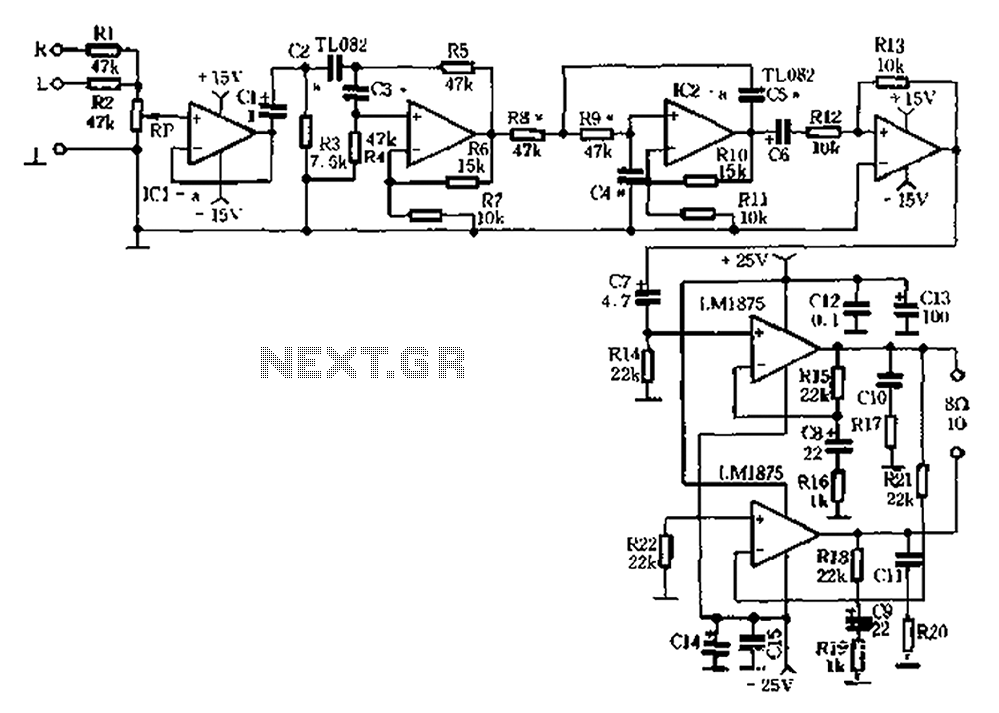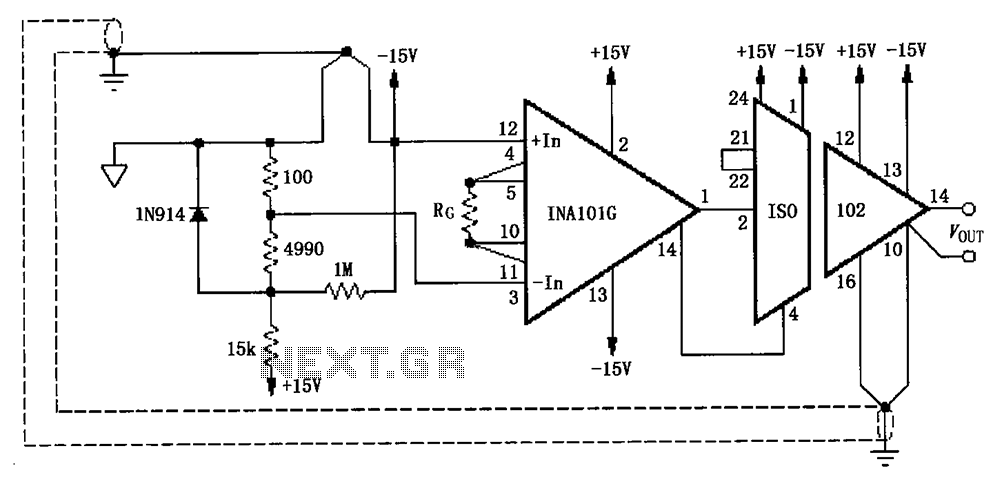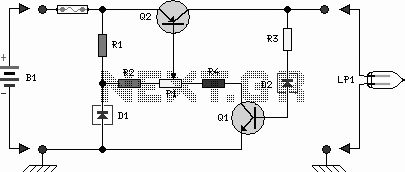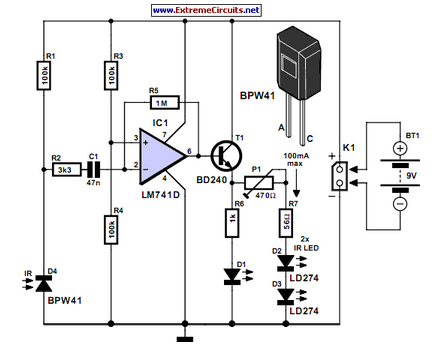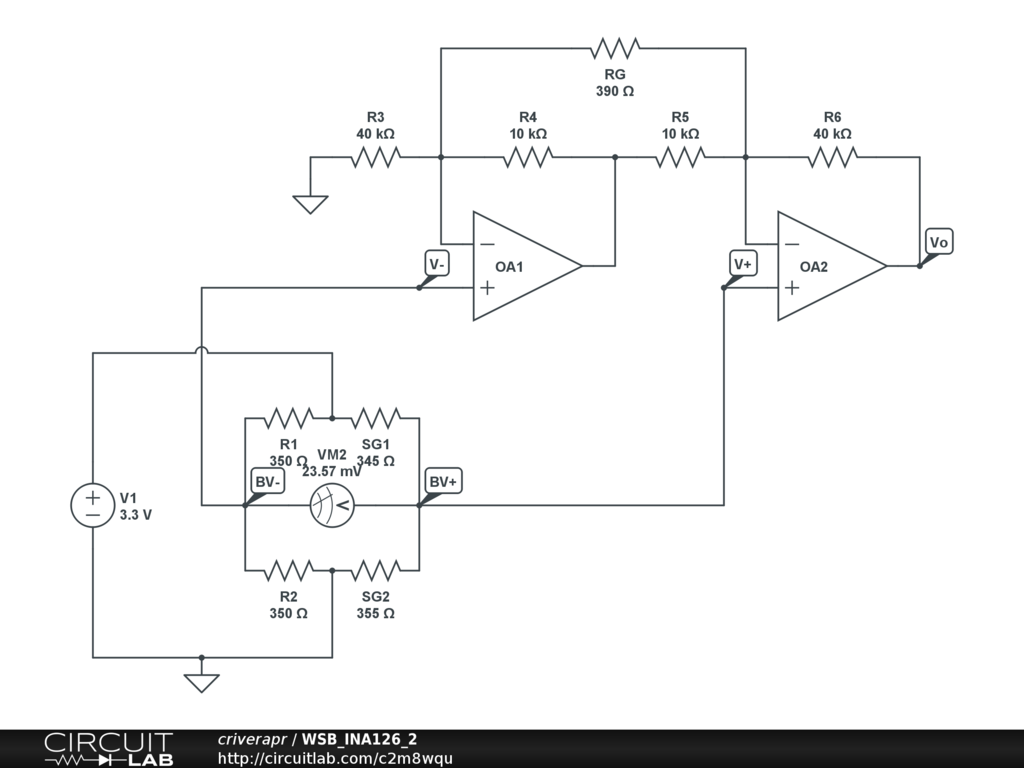
Voltage feedback closed loop speed control system
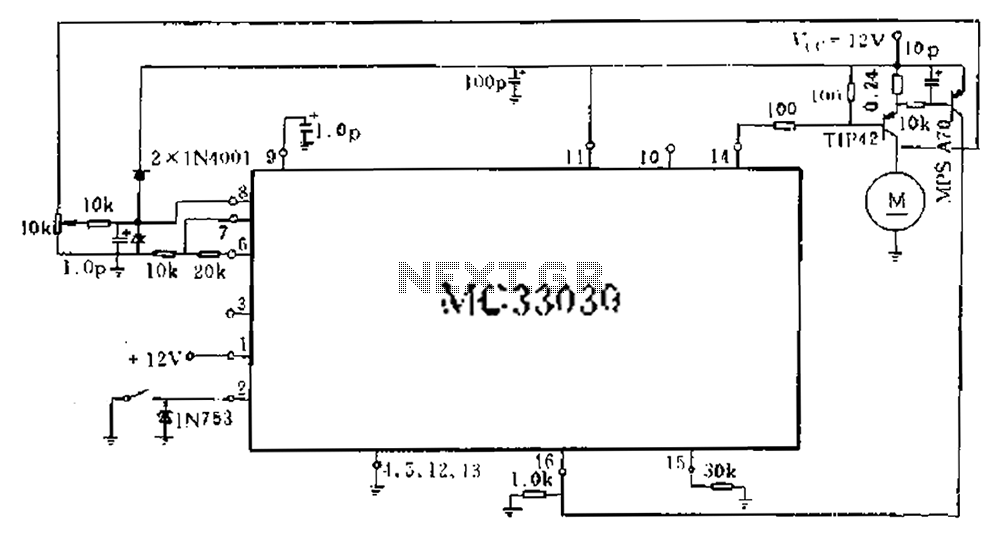
An alternative approach involves obtaining a motor's counter electromotive force from the motor end of the related signal after it has been amplified and averaged across three pins. The drive output A functions as a single-ended output, which controls a DC motor through an external TIP42 power transistor. These two scenarios illustrate the applications of the MC33030 in single steering motor configurations.
The MC33030 is an integrated circuit designed for driving DC motors, particularly in applications that require precise control of steering mechanisms. The circuit operates by utilizing a single-ended output configuration, which simplifies the driving process for the motor. The TIP42 power transistor is employed as a switch to manage the power supply to the DC motor, allowing for efficient operation and control.
In this setup, the motor generates a counter electromotive force (CEMF) when it operates, which can be measured at the motor terminals. This CEMF is an important feedback signal that indicates the motor's speed and load conditions. To effectively utilize this feedback, the signal is amplified and averaged over three pins to ensure stable and reliable readings. This averaging process helps to filter out noise and fluctuations that may occur during operation, providing a clearer representation of the motor's performance.
The integration of the MC33030 with the TIP42 transistor creates a robust system capable of handling various steering tasks. The control strategy can be further enhanced by implementing pulse-width modulation (PWM) techniques, allowing for finer control of the motor speed and torque. This is particularly useful in applications where precise steering adjustments are necessary, such as in robotics or automotive systems.
Overall, the combination of the MC33030 and the TIP42 transistor provides a versatile solution for DC motor control, particularly in steering applications, ensuring efficient operation and responsiveness to feedback signals.Another method is to elicit a motor counter electromotive force from the motor end of the associated signal after amplification averaged as 3 pins. By the drive output of A as a single-ended output, external TIP42 power transistor drive DC motor by controlling the power Gerbera. These two examples represent the MC33030 single steering motor applications. Another method is to elicit a motor counter electromotive force from the motor end of the associated signal after amplification averaged as 3 pins.
By the drive output of A as a single-ended output, external TIP42 power transistor drive DC motor by controlling the power Gerbera. These two examples represent the MC33030 single steering motor applications.
The MC33030 is an integrated circuit designed for driving DC motors, particularly in applications that require precise control of steering mechanisms. The circuit operates by utilizing a single-ended output configuration, which simplifies the driving process for the motor. The TIP42 power transistor is employed as a switch to manage the power supply to the DC motor, allowing for efficient operation and control.
In this setup, the motor generates a counter electromotive force (CEMF) when it operates, which can be measured at the motor terminals. This CEMF is an important feedback signal that indicates the motor's speed and load conditions. To effectively utilize this feedback, the signal is amplified and averaged over three pins to ensure stable and reliable readings. This averaging process helps to filter out noise and fluctuations that may occur during operation, providing a clearer representation of the motor's performance.
The integration of the MC33030 with the TIP42 transistor creates a robust system capable of handling various steering tasks. The control strategy can be further enhanced by implementing pulse-width modulation (PWM) techniques, allowing for finer control of the motor speed and torque. This is particularly useful in applications where precise steering adjustments are necessary, such as in robotics or automotive systems.
Overall, the combination of the MC33030 and the TIP42 transistor provides a versatile solution for DC motor control, particularly in steering applications, ensuring efficient operation and responsiveness to feedback signals.Another method is to elicit a motor counter electromotive force from the motor end of the associated signal after amplification averaged as 3 pins. By the drive output of A as a single-ended output, external TIP42 power transistor drive DC motor by controlling the power Gerbera. These two examples represent the MC33030 single steering motor applications. Another method is to elicit a motor counter electromotive force from the motor end of the associated signal after amplification averaged as 3 pins.
By the drive output of A as a single-ended output, external TIP42 power transistor drive DC motor by controlling the power Gerbera. These two examples represent the MC33030 single steering motor applications.
